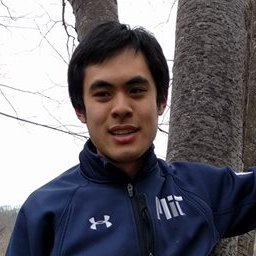Research Group
Current group members
 |
Yun William Yu - Associate Professor - Computational Biology
William is a computational biologist and applied mathematician interested in compression, genomics, privacy, and sketching. Prior to moving to CMU, he was an assistant professor in the math department at the University of Toronto. He was a graduate student with Bonnie Berger in Mathematics at MIT, and a postdoctoral fellow with Griffin Weber in Biomedical Informatics at Harvard Medical School. William is originally from Huntingburg, Indiana, USA. Google Scholar - Pubmed - ORCID - Github - Twitter |
 |
Molly Borowiak - PhD Student - Computational Biology
Molly works on applying string sketching techniques to improve RNA-seq data analysis. |
 |
Aidan Zhang - PhD Student - Computational Biology
Aidan has two major research directions. On the theory side, he is interested in the theory of k-mer subsampling. On the applied side, he has worked on building simulators for metagenomic sequencing. |
| Spencer Gibson - M.S. Student - Biomedical Engineering
|
Join the group
The primary goal of our research group is to develop applied math/CS techniques and translate them to biological and medical problems. As such, we are interested in mathematicians and scientists with diverse backgrounds and training.
For all emails, please put the keyword "[RES26YU]" in the subject line to avoid accidentally going to spam.
| Graduate students | Postdocs | Internships, undergraduates, and visitors |
|---|---|---|
| Graduate students must be enrolled in a Carnegie Mellon degree program. My home department is computational biology, but I am also happy advising students from other allied departments, such as computer science or math. If you are an enrolled graduate student, please send an email with an explanation of your goals and your interest in the lab.
Unfortunately, we cannot admit external PhD students directly to the lab. If you are not currently a graduate student at CMU, consider applying to the joint CMU-Pittsburgh Ph.D. program in computational biology. |
We are hiring! Please apply on Interfolio: https://apply.interfolio.com/177771
We are interested in both more theoretically-minded and more computational/engineering-focused postdocs, though all postdocs should expect to be both. If you are interested in working with us, please email your CV, at least one paper you've written, a brief description of your background, and your goals in pursuing a postdoc. |
If you are an undegraduate at Carnegie Mellon interested in computational biology research, please email with a description of your goals and interest in the lab, as well as relevant math, CS, and biology coursework you've taken. |
Alumni
| Degree and research project | Last seen | |
|---|---|---|
| Jim Shaw | University of Toronto PhD in Mathematics Practical and theoretical problems in biological sequence comparison Personal Homepage - Google Scholar - Github |
Postdoctoral Fellow in the Heng Li lab at Dana-Farber |
| Grace Oualline | CMU Double Major in Biology and Computational Biology skandiver: a divergence-based analysis tool for identifying intercellular mobile genetic elements |
Postgraduate Associate at Yale University |
| Xiaolei (Brian) Zhang | CMU M.S. in Quantitative Biology and Bioinformatics skandiver: a divergence-based analysis tool for identifying intercellular mobile genetic elements |
Computational Biology at NY Genome Center |
| Ben Connors | University of Toronto MSc in Math Chasing Databases: The Theoretical Evolution of Data Migration. |
Western Ontario Math PhD program |
| Yeonjoon (Philip) Choi) | University of Toronto MSc in Math Exploration of Persistence Landscapes as Early Warning Signals. |
|
| Kiran Deol | University of Toronto Summer Research Experience (SUDS) SlowMoMan: A web app for discovery of important features along user-drawn trajectories in 2D embeddings |
University of Alberta undergrad in CS |
| Andrew Zheng | University of Toronto BS, Mathematics / Cell & Molecular Biology Mora: abundance aware metagenomic read re-assignment for disentangling similar strains |
University of Toronto PhD program in Math |
| Siyue (Nina) Wang | University of Toronto MScAc, Computer Science Secure Cross-service Genomic Data Federated Analysis with GraphQL |
|
| Xinqi Shen | University of Toronto MScAc, Applied Computing Achieving Clinical Automation in Pediatric Emergency Medicine with Machine Learning Medical Directives |
|
| Luke Staniscia | University of Toronto MSc, Mathematics Image-centric compression of protein structures improves space savings |
Scotiabank |
| Ziye (Rachel) Tao | University of Toronto BS, Applied Math Specialist & Statistics Major Expected 10-anonymity of HyperLogLog sketches for federated queries of clinical data repositories |
Harvard Data Science MSc program |
| Yeji Wi | University of Toronto BS in Mathematics and Physics Privacy-ppreserving machine learning techniques using homomorphic encryption in medicine |
Politecnico di Milano Masters in Mathematical Engineering program |
| Abbas Hammoud | University of Toronto MSc in Mathematics Privacy-accuracy trade-offs in noisy digital exposure notifications |